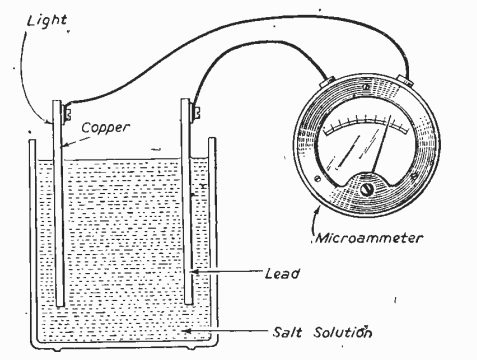 Today, we have another science fair project suitable for students who like to use dangerous chemicals. It’s a homemade photoelectric cell. It won’t provide large amounts of current, but it is measurable, and it can probably be used to receive a signal from a modulated beam of light, simply by connecting it to an audio amplifier (similar to this previous project).
Today, we have another science fair project suitable for students who like to use dangerous chemicals. It’s a homemade photoelectric cell. It won’t provide large amounts of current, but it is measurable, and it can probably be used to receive a signal from a modulated beam of light, simply by connecting it to an audio amplifier (similar to this previous project).
The cell consists of a beaker of water in which a “pinch” of salt has been added. Into this are inserted strips made of copper and lead. The copper is heated with a torch to oxidize it, after which it is scrubbed with nitric acid. There is some current even in darkness, but when the copper strip is exposed to light, the current increases.
The project appeared in the November 1948 issue of Practical Wireless.
